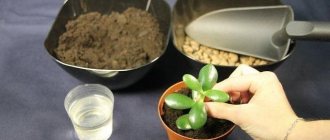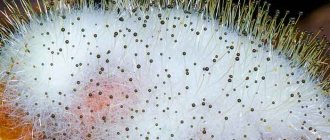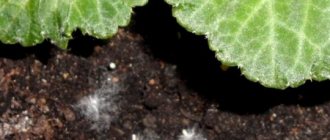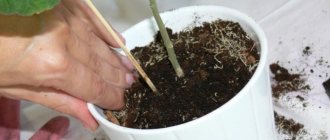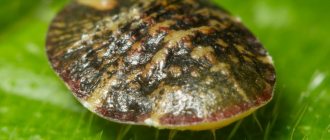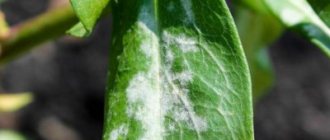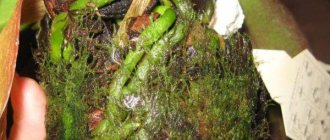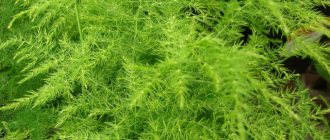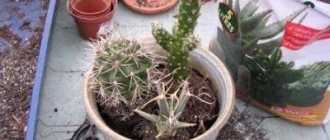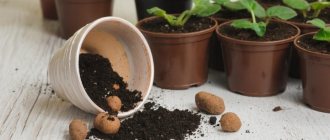Hardy, persistent and undemanding crops can surprise you just as much as indoor exotics. Some problems signal the need for minor adjustments to the care program, others indicate subtle changes in living conditions, and others require major action. Most often, when growing indoor pets, one encounters a seemingly insignificant deviation in the decorative appearance of foliage - the appearance of dry tips. Let's try to figure out why the tips of the leaves dry out and how to prevent a small problem from turning into a big hassle.
Drying of the tips of leaves does not always lead to their falling or wilting; more often than not, it does not affect even 1% of the leaf surface. But it invariably affects the attractiveness of the plant and spoils its appearance. And this phenomenon should not be ignored, even if it seems purely seasonal (most often winter). It may only take a minor correction of the conditions to combat it, but if you are inattentive and miss the real cause, the plant will suffer much more, and the fight against the problem will be long.
Raid on the ground
A white coating on the soil in a pot is a clear sign of “overfeeding” the plant. This usually happens when watering with tap water, which is highly hard. If you water the plant too much, it will not have time to absorb such a large amount of moisture. As a result, the liquid evaporates and salts accumulate on the soil.
Sometimes a white coating appears even when you use soft water. This indicates that an excessive amount of salt fertilizer is applied to the soil. When water evaporates from the soil, it draws salts to the surface of the soil, which form a white coating.
How to get rid of powdery mildew on roses
The fight against powdery mildew on roses begins with prevention - it is easier to prevent any disease than to get rid of it for a long time and painfully.
As you already know, the development of fungus is facilitated by dense plantings, excessive dampness, excess nitrogen and calcium deficiency in the soil. Therefore, your plants initially need to create suitable conditions:
- Choose varieties of roses that are resistant to powdery mildew (Cadillac, Rosoman Janon, Westminster, Gloria Day, Aphrodite, Crocus Rose, Halle, Summerson, Hot Chocolate, Purple Tiger, Four Us Love, etc.).
- Plant roses in well-drained soil and in areas with adequate light.
- Do not allow plantings to thicken.
- Remove and destroy plant debris and litter in a timely manner.
- Water the bushes only in the morning (this helps the water on the leaves dry out during the day) and only after the top layer of soil has dried.
- Apply the recommended rates of mineral fertilizers, especially nitrogen fertilizers - it is better to underfeed the plant than to overfeed it. An acceptable option is to replace mineral fertilizers with organic ones (compost, diluted chicken manure).
- Dust roses with ash two or three times a season.
- For preventive purposes, spray rose bushes with Fitosporin-M.
But what to do if you neglected prevention, didn’t take care of the plants, and a white coating has already appeared on the roses?
First, trim and destroy absolutely all affected parts of the plant. It is also advisable to tear off the old large leaves at the bottom that touch the ground and thin out the shrub roses.
Second, adjust your watering schedule to get rid of excess moisture. In a greenhouse, for example, ventilation and heating systems need to be optimized.
Thirdly, if possible, the top layer of soil in the container (for indoor roses) or under the plant in the area should be replaced to get rid of accumulations of mushroom mycelium.
How to treat roses against powdery mildew? At the first signs of disease, treat the bushes with 1% Bordeaux mixture or 0.4% copper oxychloride solution. In case of severe infection, carry out abundant therapeutic spraying of plants and the soil under them with a fungicide (Topaz, Skor, Previkur Energy, Racurs, Chistotsvet, Tiovit Jet) two or three times with an interval of 7-10 days.
While fighting powdery mildew, avoid using any fertilizers.
Drying leaf tips
Drying leaf tips is another symptom of overfertilization. However, the remaining green parts of the plant may not look wilted.
Drying tips most often appear in non-flowering species. Such indoor plants react especially negatively to “overfeeding”. If you continue to abuse fertilizers, this will lead to deviations in the growth and development of the crop.
Record on paper the frequency of fertilization. Compare it with the feeding schedule recommended by plant breeding manuals. You can also consult experienced flower growers. This will help you identify mistakes made and avoid them in the future.
Folk remedies for powdery mildew on roses
If you fundamentally do not want to “poison” your garden with “chemicals,” you can try treating roses against powdery mildew with folk remedies. Just remember that the vast majority of them are effective only as a preventive measure or in the initial stages of the spread of the disease. If the fungus “operates” on the bushes for more than a week, fighting powdery mildew in this way is practically useless. It may be possible to stop the development of the disease, but not completely eliminate it.
So, how to treat roses from white plaque? Folk remedies for powdery mildew:
- Soda solution . 1 tbsp. baking soda or soda ash and 1/2 tsp. liquid soap is diluted in 4 liters of warm water. The solution is cooled and used for spraying roses (2-3 times in dry weather at intervals of a week).
- Ash infusion . 1 kg of ash is poured into 10 liters of warm water, left for 3-5 days, stirring regularly, filtered, added 1/2 tsp. liquid soap and used to spray roses. You can add another 10 liters of water to the ash sludge and use this solution for irrigation.
- Mustard solution . 2 tbsp. dry mustard is diluted in 10 liters of hot water, cooled and used both for spraying roses and for watering them.
- Garlic infusion . 30 g of chopped garlic is poured into 1 liter of water and left for 24 hours. Then filter and use for spraying.
- Potassium permanganate solution . 3 g of potassium permanganate powder is diluted in 10 liters of water. The solution is used both for spraying roses and for watering them.
- Whey solution . 1 liter of whey is diluted in 10 liters of water. The solution is used for spraying.
- Infusion of rotted manure . Rotted cow manure is diluted with water in a ratio of 1:3 and left for 3 days. Dilute the resulting concentrate twice with water and spray the bushes.
- Horsetail decoction . 100 g of crushed fresh plant is poured into 1 liter of water, left for 24 hours, and then boiled for 1 hour. The broth is filtered, cooled, diluted with water in a concentration of 1:5 and sprayed on rose bushes. This concentrate can be stored for no more than a week in a cool, dry place.
Slow growth
If a houseplant has slowed down its growth, this means that an excessive amount of chemical elements such as manganese, potassium and copper has accumulated in the soil. Pay attention to the appearance of the greenery. This will allow you to understand which substance is present in excess.
If yellow spots appear on the leaves, this indicates an excessive amount of manganese. The brown color of the spots indicates overfeeding with fertilizers containing copper. Too light and curly foliage, as well as long internodes, are signs of excess potassium.
Why do the tips of leaves on indoor plants dry out and how to deal with it?
Dry air is what immediately comes to mind when we see dry tips on indoor plants. But not everything revolves around humidity. There are other reasons why yellow or brown spots appear on leaves.
Every gardener has encountered the problem of dry leaf tips in indoor plants at least once. It doesn’t matter whether you grow begonias, spathiphyllum, roses or orchids. At the same time, potted flowers do not show other alarming symptoms, continuing to grow and even blooming. Let's try to figure out why the tips of the leaves of indoor plants dry out, whether it is dangerous and how to eliminate the defect.
Most often, yellow, brown and even black dry tips are the result of improper care or a reaction to the activity of pests. The process of natural aging cannot be ruled out. True, the latter can be delayed by creating the most comfortable conditions for the green pet.
To determine why the leaf tips of spathiphyllum, geranium and other plants turn yellow and dry, diagnose the condition of your green pet. The complexity of the procedure lies in the fact that the search for the cause most often has to be carried out from the opposite direction, i.e. by exclusion method.
Make sure that the depressed state of the plant is not caused by pests. They like to hide on shoots and on the undersides of leaves, so inspect these places especially carefully. Parasites can also be on the roots. But don't rush to check it out. Perhaps the reason is completely different, and you will only damage the root system in vain.
Assess the hardness of the water used for irrigation. If you do not settle tap water before watering, plants may suffer from high levels of salts, fluoride, chlorine and other heavy substances that change the characteristics of the soil, making the substrate uncomfortable.
Compare your fertilization schedule with the recommended fertilization schedule. The reason why the leaves of palm trees, dracaena, ficus, orchids and other crops dry out may be frequent or, conversely, rare feeding. Measure air humidity levels. Assess how much air humidity in your apartment is suitable for moisture-loving species. Check to see if the plant is cramped in the pot. One of the alarm bells may be roots emerging from the drainage hole. Determine the moisture content of the substrate and the degree to which it dries out between waterings. This can be done either by touch or using indicators that are sold in flower shops. If you find a deviation from the norm in just one point, the cause of dry ends is usually easy to eliminate. But if, after a preliminary analysis, you see several problems at once, you will have to take comprehensive measures.
Let’s start “treating” indoor flowers: general rules
Regardless of the reason why the leaves of anthurium, Kalanchoe or chlorophytum dry out, any plant could use emergency help, which consists of the following:
Replacing the surface layer of soil with fresh substrate. This will reduce the risk of soil contamination and eliminate salt deposits from hard water.
Cleaning the surface of leaves from dust. For plants with delicate leaves, this can be done using a shower. If the leaves are denser and not prone to mechanical damage, use a soft cloth.
You should avoid bathing in the shower if the leaves of plants have edges (such as those of violets).
Change in air humidity. Spraying, a humidifier, or a regular container of water placed next to the flower will help with this.
If you suspect that the plant has been flooded, do not increase the humidity until the soil dries out.
Reconsidering principles of care. Make sure the plant is getting exactly what it needs from you. Each green pet is individual, and therefore, the care program needs to be selected individually.
Reason #1. Dry air in the apartment
Many representatives of tropical latitudes, for whom warmth and high humidity are the norm, have moved to live in our apartments. But creating such conditions at home can be extremely difficult, especially during the heating season, when the already dry air dries out completely.
Don’t think that you can save the situation by increasing watering. By doing this, you will only achieve rotting of the root system, and therefore, the leaves will receive even less moisture.
The following methods will help increase humidity:
Spraying. It is advisable to irrigate the leaves with a spray bottle at least 2-3 times a day. Otherwise, this measure will be ineffective.
Spraying is not suitable for plants with blooming flowers (drops falling on the inflorescence can cause it to wilt), as well as for species with pubescent leaves.
Use of humidifiers indoors. Using a humidifier you can very quickly increase the humidity to the desired level.
Place the pot on a tray into which damp moss, pebbles or expanded clay are placed in advance. The bottom of the pot should not come into direct contact with the liquid. Moisture from the pan will evaporate, increasing the humidity locally.
Finding a new place for plants, away from heat sources. If possible, install regulators on the radiators so that the heating intensity can be reduced.
Temporary transfer to the bathroom or kitchen. In these rooms the air humidity is always higher than in other parts of the house.
Reason #2. Watering indoor plants with hard water
Tap water is usually too hard to water plants with. Moreover, even when settled, green pets do not always like it, because... may contain a lot of salts.
If the reason why the leaves of spathiphyllum, begonia, dracaena, and roses dry along the edges lies in the quality of water, you can suspect the problem by a white coating on the top layer of soil. In this case, you need to proceed as follows.
Remove plaque (if any). Try not to damage the root system. Add fresh substrate to the pots.
Check in the reference book what the plant prefers to “drink.” Perhaps he needs particularly soft or slightly acidified water.
Avoid watering with running water completely. Be sure to let tap water sit for at least 24 hours (preferably several days). It would be a good idea to strain the liquid before use. If the hardness of even settled water is not suitable for plants, replace it with boiled, melt or rain water.
Reason #3. Violation of the plant watering regime
When asked why the tips of leaves dry out on dracaena, “female happiness,” anthurium, and arrowroot, they usually answer that the plant is overdried. However, not only excessive drought, but also excessive watering can cause this cosmetic problem.
Most indoor plants tolerate temporary “drought” much better than overwatering.
Sometimes it is difficult to understand whether a plant is flooded or too dry. When overmoistened, the leaves lose turgor and look lethargic and lifeless. They seem to be lacking moisture. This is true. The only reason is that the root system is rotten, which means it cannot deliver water to the leaves.
The lower the air temperature in the room, the more dangerous is overwatering.
If you suspect that you have dried out or overwatered the plant, follow our recommendations.
Check the plant's water needs. Find out whether it needs scanty or abundant watering, and whether it matters if the soil clod dries out between waterings. Also check which method of watering the flower prefers - standard or in a tray.
Analyze the quality of drainage and drain holes. Overmoistening, which results in rotting and deterioration of the air permeability of the soil, can be caused by a hole in the pot that is too small or a lack of drainage. If so, repot the plant. If there are no problems with drainage, let the earthen ball dry out almost completely, and only then water the plant.
When there is drought, water more frequently and abundantly. But do not let the liquid stagnate in the pan. Carry out the next watering after at least a few inches of the top layer of soil have dried out - for moisture-loving crops and after the middle layer of soil has partially dried out - for succulents and other low-drinking species.
Consider buying a pot with self-watering. This invention will save you from the hassle of individually selecting the frequency of watering for each plant.
Buy a soil moisture meter. Use the device every time before watering to understand how much water the plant needs.
You can water a flower regularly, but it will still suffer from thirst if the amount of water remains insufficient. The surface of the soil may remain wet, but the liquid will not reach the roots. It is not difficult to make sure that moisture reaches the roots. Just pour water until it starts to seep into the pan.
Reason #4. Plant oppression by pests
If pests are noticed on the leaves or stems, this may be the main cause of the yellowed tips. The parasites drink the cell sap, thereby infecting the leaf. In this case, treatment measures must be taken as quickly as possible, because The problem may not be limited to dry ends alone. In addition, the plant can infect its healthy neighbors.
In addition to parasites such as aphids, scale insects, and spider mites, gardeners should also be wary of fungal diseases. They destroy leaf after leaf until the plant is completely destroyed. The fungus can often be recognized by the brown spots that accompany wilting and drying of the leaves.
Complex therapy includes the following stages:
isolation of the diseased plant from other crops; washing the leaves with soapy water; increased air humidity; application of insecticides; disinfection of pots before replanting. Since the diseased plant may have come into contact with other crops, strengthen safety measures for other indoor flowers.
The best protection against pests is prevention of their occurrence. Therefore, always treat the pots before planting, use only packaged soil or calcine garden soil. And never place recently purchased flowers next to the permanent inhabitants of your home flower garden. Isolate “new arrivals” for at least a month to ensure they are healthy.
Reason #5. The pot is too small for the flower
Brown leaf tips may appear if the plant is planted in a pot that is too tight. By the time the roots have taken over the entire space of the flowerpot, the soil will have already been depleted, which means that the flower will be sorely lacking in nutrition. Finding out if this is what caused the problem is easy. If roots are already visible from the drainage hole, then an emergency transplant is required.
Reason #6. Lack of light or direct sunlight
Incorrect placement can also cause leaf tips to turn black. Moreover, both too bright light (direct sunlight) and lack of lighting lead to a similar result.
When trying to understand why the leaves of flowers dry out, it doesn’t hurt to analyze whether direct sunlight burns the plant. This provokes the appearance of not only brown tips, but also entire spots. This phenomenon occurs especially often after spraying on a sunny day.
Yellowing due to lack of light looks different. It manifests itself as an uneven loss of color and may be accompanied by the dropping of leaves (hibiscus behaves this way most often).
Find out which window (north, east, southwest, etc.) the flower prefers to grow on, and try to find a suitable place for it.
If it is not possible to place the pot on a bright window, get an additional lamp. This can be a special phytolamp or a regular fluorescent one.
If the leaf tips are turning yellow on only one side of the flower, try rotating the pot from time to time to ensure all shoots receive enough light.
Protect the plant from bright sunlight using blinds or regular cardboard (its size should correspond to the height of the flower), which should be placed between the window and the flower pot during the daytime.
Reason #7. Drafts in the apartment
The plant can grow quietly in a cool room. But it will react very poorly to sudden temperature changes caused by cold air masses. Drafts are detrimental to almost all indoor flowers. As a result, slightly yellowish spots appear on the leaves, which fade until they become translucent.
The source of drafts and cold air currents can be not only an open window, but also a running air conditioner or fan. Place the pot where the influence of cold air is minimal, and the flowers will again thank you with lush and juicy greenery.
Reason #8. Incorrect feeding scheme for indoor flowers
Excessive care for houseplants often causes yellowing of the tips. This is especially true for those gardeners who like to apply fertilizers, guided by the principle “the more, the better.” As with watering with hard water, a white coating may form on the surface of the substrate, which needs to be removed. Be sure to stop feeding.
Yellow tips can also signal that you have not fed the plant for a long time or have not taken care of its balanced diet. The lack of elements manifests itself in different ways.
Potassium deficiency: the tips and edges of the leaves turn yellow, but the veins do not change color.
Nitrogen deficiency: tips and veins turn yellow. The leaves become smaller and gradually lose their color saturation (even turning white).
Calcium deficiency: leaf tips turn brown, leaves become deformed and curled. The defect occurs in soils that are too acidic or too alkaline.
Zinc deficiency: Leaves look like they've been sun-bleached. They lose color. The veins protrude.
Iron deficiency: leaves turn yellow and become smaller. The veins retain their green color, but become more convex.
If only the tips of indoor plants dry out, and the leaf blade itself remains healthy, this rarely leads to serious problems. Although, of course, all this spoils the appearance of the flower and the mood of its owner. If it's just a matter of dry air, perhaps everything will go away after the end of the heating season. But if the reason is more serious, then you cannot turn a blind eye to the flower’s disease, so as not to aggravate the situation.
Root death
Excess fertilizer in the soil can cause root burns. As a result, the roots begin to gradually die. Most often this happens when magnesium supplements are abused. An excess of this element is also indicated by curling and darkening of the foliage.
Root death leads to calcium deficiency. The plant loses its ability to absorb this substance. Crops growing in acidic soils do not suffer from excess magnesium.
Care errors
Pepper is a plant that loves sunlight and warmth, but its leaves do not respond well to direct sunlight and dry climates. The optimal temperature for this crop ranges from 20-28 degrees Celsius. You need a lot of light, at least 10-12 hours a day.
The soil should not be acidic or clayey. Peppers need to be watered correctly and fed on time. Let's look at the main mistakes when caring for a plant.
Cause of the disease
Many gardeners are interested in the very reason for the appearance of this fungus. In most cases, the main cause of this disease is bad weather conditions, such as heat, or, conversely, high humidity. But as always, the person himself can become a pest. In this case, a person can become the cause of such a disease if he does not properly care for the plants, and simply put, fertilizes them incorrectly, or uses low-quality fertilizer.
Like most diseases, powdery mildew can be cured, the main thing is not to deepen the problem, but to start a war with this type of fungus in time. And it’s even better if you take all possible measures before it appears, because it’s easier to prevent trouble than to fight against it. In order to eliminate the possibility of encountering this problem, you should adhere to several tips and rules.
Stages of powdery mildew
If, in general, to describe such a disease. The flour rash can be divided into several stages. At the first stage
a light, almost imperceptible silvery coating appears, the coverage area is small.
The process of damaging the plant itself begins from the bottom and destroys the plant to the very top. At the second stage,
not only plant trunks and leaves are infected, but also new petals and shoots that have only recently appeared.
If it is a fruit-bearing plant, then the fruits are also infected with the disease. At the third stage,
you may lose the plant itself. When it is completely sick, the leaves begin to wither and the root itself begins to dry out.
Other causes of spotting
If suspicious spots appear first on the leaves of one plant, and then of another - its neighbor, etc., immediate action must be taken. Most likely, these specimens are affected by a fungal infection.
However, the appearance of stains on leaf blades can also be caused by relatively harmless factors: splashes of hot water, paint, creosote, oil or residues of granular fertilizers. Spotting is also caused by the use of improperly prepared preparations, such as Bordeaux mixture.
White spotting of tomato leaves and its treatment
White spotting of tomatoes is characterized by the formation on the lower leaves of individual dirty white spots with a dark border, inside which black spores develop. High air humidity and heat contribute to the rapid spread of this disease.
As can be seen in the photo, white spotting of tomato leaves sometimes spreads to stems, petioles and even green fruits.
To combat white spotting of strawberry leaves, its dry leaves must be burned in early spring.
In the period after removing dried leaves and before new ones begin to grow, it is recommended to generously spray the bushes and soil with a 4% solution of Bordeaux mixture (400 g per 10 liters of water). In addition, you can spray with a 1% solution of Bordeaux mixture (100 g per 10 liters of water) at the beginning of leaf growth, before flowering and after harvesting. In this case, the solution must also get on the underside of each sheet. It is necessary to remove all dried strawberry leaves, since this is where the fungal spores overwinter. White spotting is common in dense plantings, so it is recommended to thin out the bushes. In addition, weeds in the area should be promptly removed.
To combat leaf spot of currants and gooseberries, it is recommended to generously spray the bushes and soil with a solution of copper sulfate. The procedure should be carried out before the buds open. The second spraying should be carried out 10 days after harvesting. When the first symptoms of white spot appear, it is necessary to spray the bushes with a solution of colloidal sulfur. It is important to promptly remove all fallen leaves under currant and gooseberry bushes and dig up the soil in the tree trunk circle.
To combat white spotting of pears, it is recommended to spray the trees with a 1% solution of Bordeaux mixture (100 g per 10 liters of water). This procedure should be carried out during bud break or bud development. The second spraying is recommended to be carried out immediately after flowering, and the third - 15-20 days after it. The third spraying with Bordeaux mixture should be carried out carefully so as not to cause burns to the leaves. To check, it is recommended to carry out selective spraying of individual branches.
To combat white spotting of tomatoes, it is necessary to remove heavily affected plants from the garden bed or greenhouse. Before sowing seeds, it is important to thoroughly treat them.
Natural metamorphoses
In some cases, changes in leaf color are due to the natural aging process or time of year. For example, at the end of summer and the first half of autumn, certain hormonal changes occur in the tissues of deciduous plants. The color of the leaves becomes completely different: they are painted in bright autumn tones. However, they then turn brown, dry out and fall off. It is clear that this process has nothing in common (except for external changes) with real leaf spotting, which is caused by various fungal infections. That’s why it’s so important to find out the cause of his condition before you start feeding your pet chemicals.
Article on the topic: End rot of plants, how to treat
Powdery mildew. White spots, plaque on leaves and fruits. Signs, symptoms, treatment, prevention
Powdery mildew is a fungal disease of plants. How to diagnose a disease and cure a tree or bush. How to determine. How to prevent infection (10+)
Related article: Bacterial plant cancer, how to treat
The material is an explanation and addition to the article:
Plant diseases - overview The plant is sick. How to determine the disease? Types, types, classification of plant diseases and pests. Treatment tips
For every housewife, her plot is her unique outlet. Which she cherishes and protects. The housewife's eye rejoices when her flowers, bushes, trees grow well, and fruitful plants also bear fruit. But sometimes our plants can be damaged by various diseases. One of them is powdery mildew
. Which covers the surface of plants with white spots. These are not even spots, but a kind of coating, this is how one of the types of fungus manifests itself, which very quickly spreads to all other plants. So you need to respond to this disease immediately and prevent it from getting worse, as it will be more difficult to fight it later.
Improper watering
The plant should be watered with settled warm water. This should be done early in the morning or in the evening, when the sun is no longer active. Water can be collected in a large container in the evening and allowed to warm up under natural conditions. Then it will accept the air temperature, which will have a positive effect on the growth of the crop.
Watering should be done when the soil is dry. The leaves of pepper seedlings also get sick from too wet soil. Excessive watering should not be allowed, as this can lead to the development of fungal infections.
